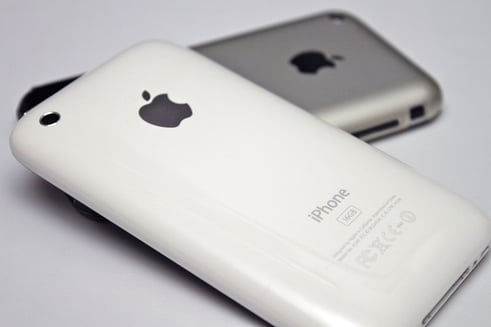Some call it the Golden Number, some the divine proportion, and even the most irrational number. Whatever name it goes by, scientists and mathematicians all agree that the number "phi", or 1.618..., in relation to 1 is one of the most intriguing anomalies in the natural and mathematic world.
The ratio appears all throughout human and natural history, cropping up in more places in art, music, and architecture than any number except pi (3.1415...). Like pi, golden ratio's digits never repeat themselves. In 1996, ten million digits were computed with no patterns found.
(Image Courtesy of Wikimedia and Ortuns)
Even more awe-inspiring is the presence of the divine mean in the human anatomy. The sole of the foot to the navel when measured against the sole to the crown is phi (1.618...). The navel to the sternum base when measured against the navel to the sternum/mid-chest is equal to phi. The nose to the chin when measured against the nose to the base of the throat and it is equal to... guess what? Phi!
The perfection of the imperfection of this number provides one of the most visually aesthetic ratios to the human eye. The divine proportion has been psychologically tested and proven to be more appealing to the human eye and brain than any other number. When subjects are presented with a range of rectangles, they invariably pick out as most pleasing ones whose sides are in the golden ratio. Hence, it is inevitable use in many famous masterpieces such as the Mona Lisa, the Parthenon, and even modern day advertising.
Take the wildly successful company Apple for instance. The genius designers at Apple may have used phi extensively when constructing both their products and their logos. Upon close inspection, you see the presence of golden geometric ratios in the famous apple logo and the iPhone's anatomy.
(Image Courtest of Wikimedia and Yutaka Tsutano)
Of course, it all depends on how you draw the rectangles. But really, the coincidence is enough to convince most scientists, such as Mario Livio, internationally known astrophysicist best known for his book, The Golden Ratio: The Story of Phi, the World's Most Astonishing Number (2002), that the existence of phi is an incredibly understated occurrence in our world.
As shown by the success of Apple's products, the appeal of the ratio proves useful in advertising, logo, and product design. Scientists are still discovering uses and occurrences of phi in fields such as biology, physics, astronomy, and biotechnology.
If you are such a scientist, the opportunity to connect and network with other quality researchers is coming up at Biotechnology Calendar, Inc.'s 11th Annual Stony Brook BioResearch Product Faire™ at Stony Brook University in New York on September 28th, 2016. Don't miss this chance to check out all the newest biotechnologies and research equipment produced by the finest researchers and suppliers in the nation! Click below for more information:




